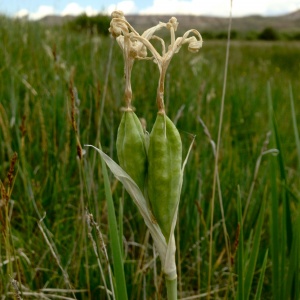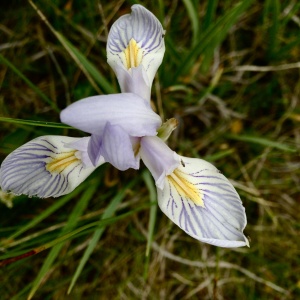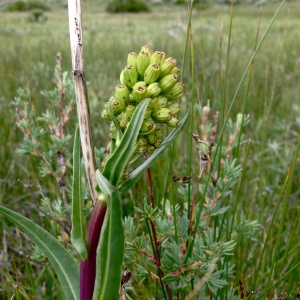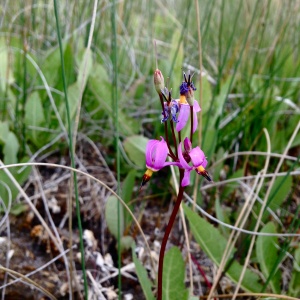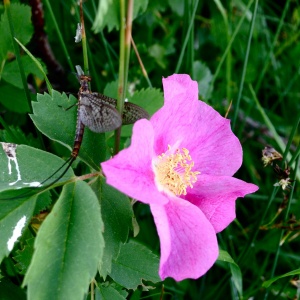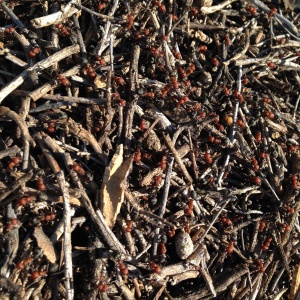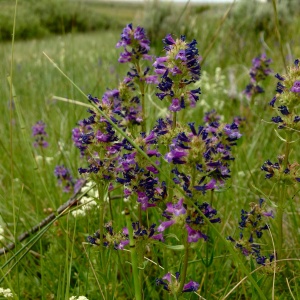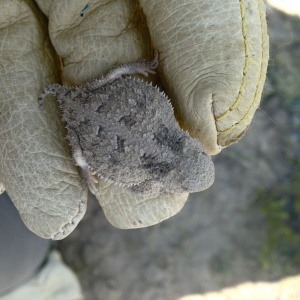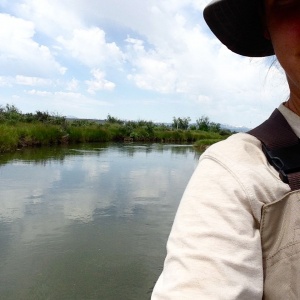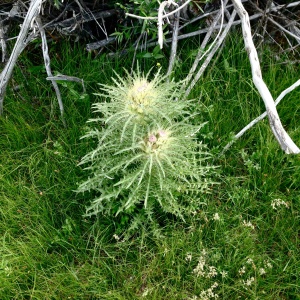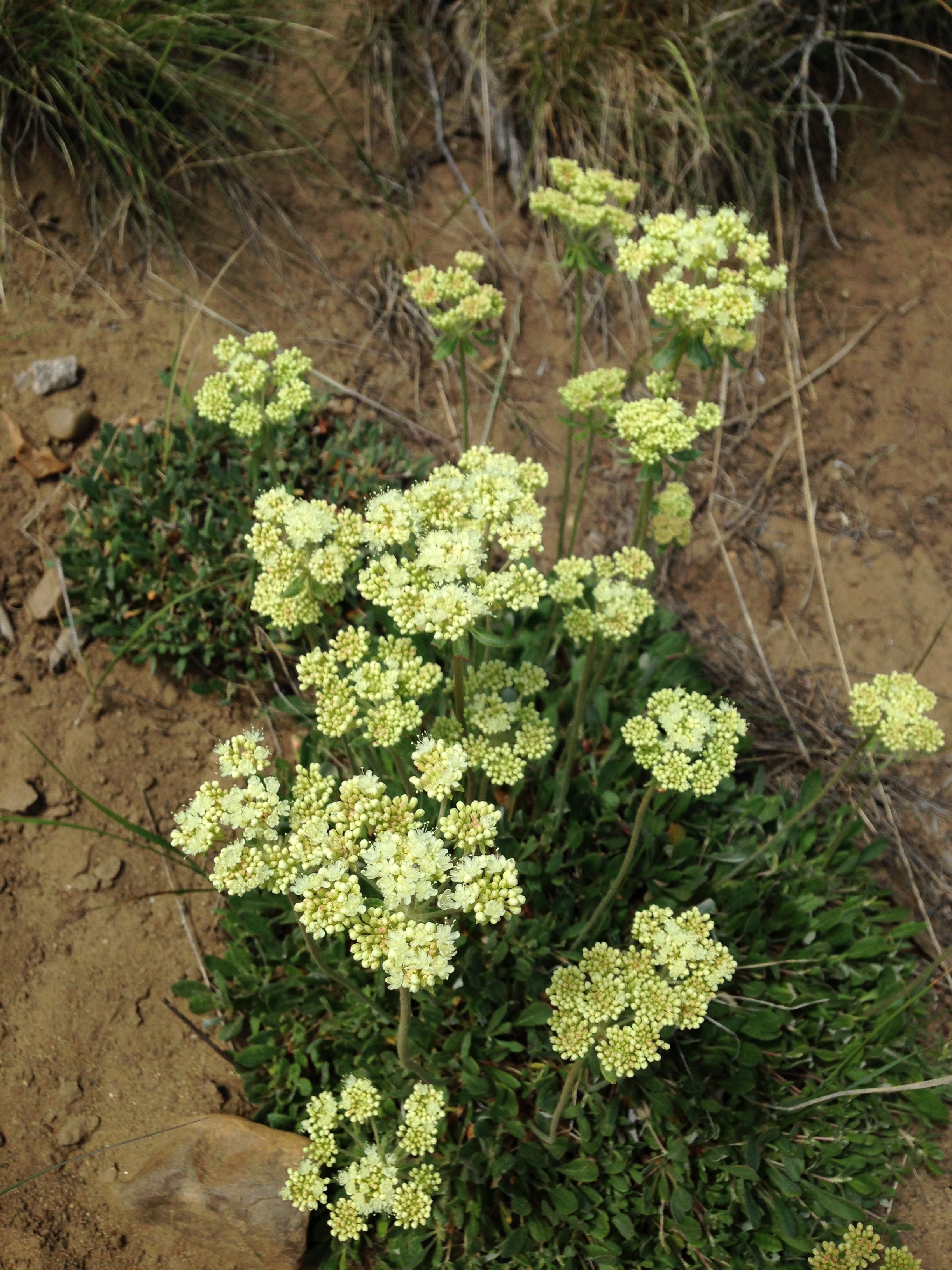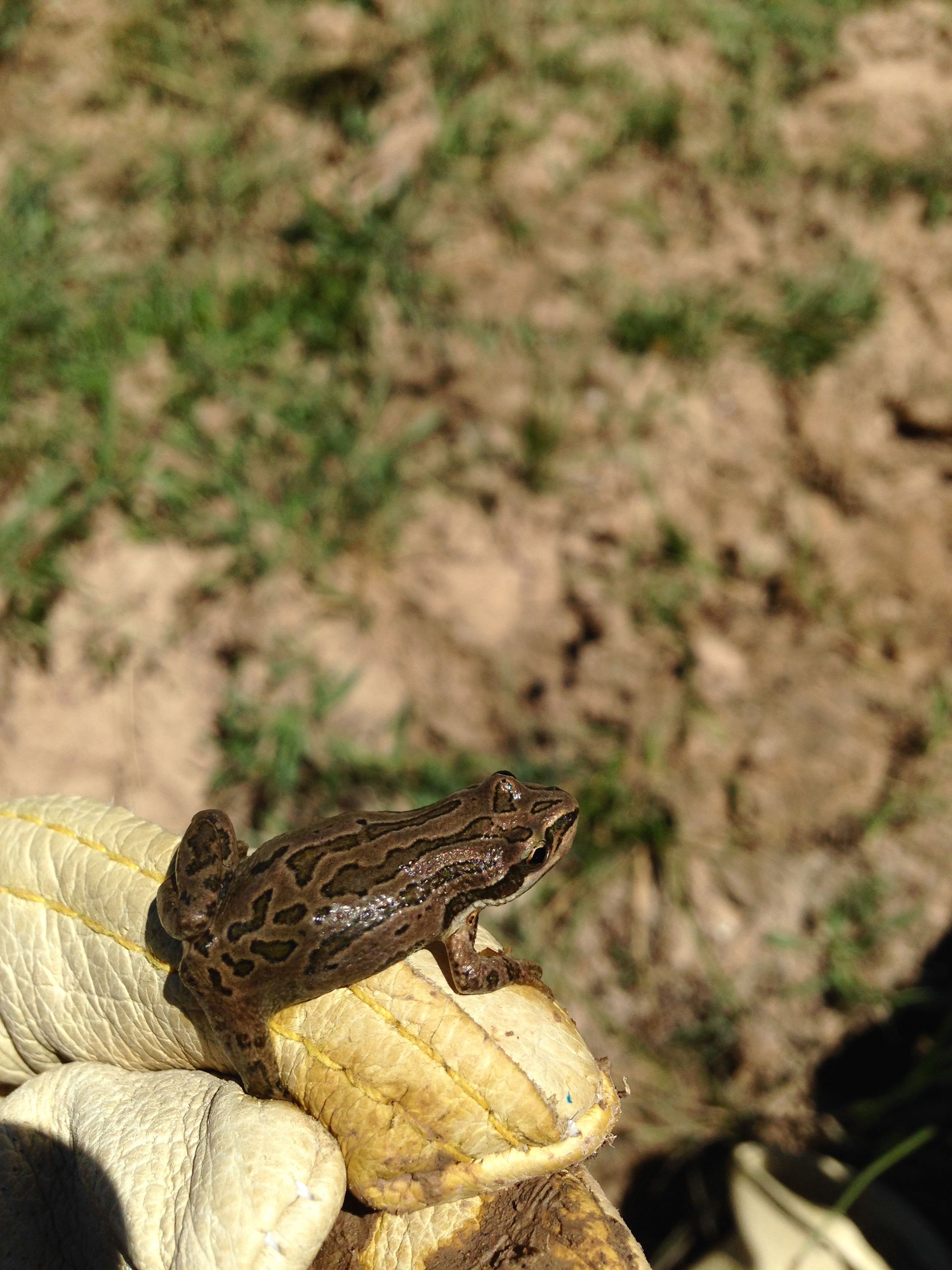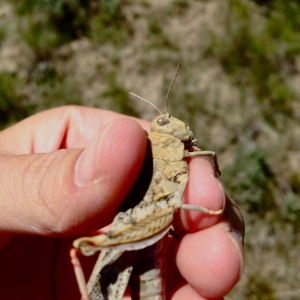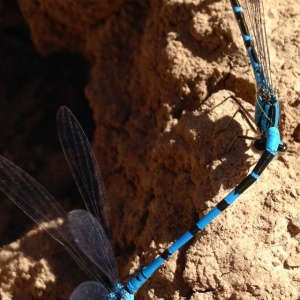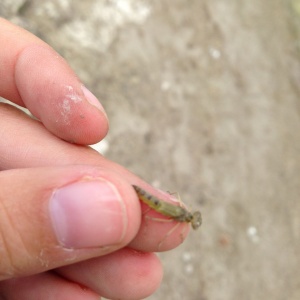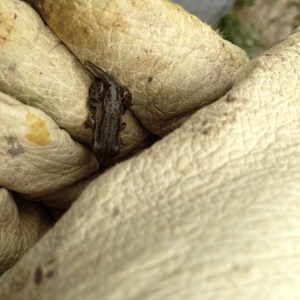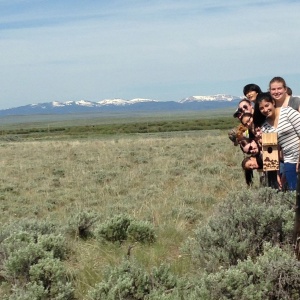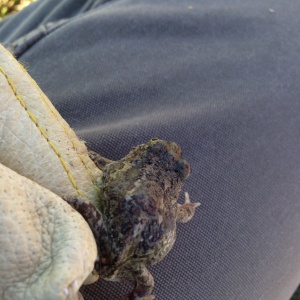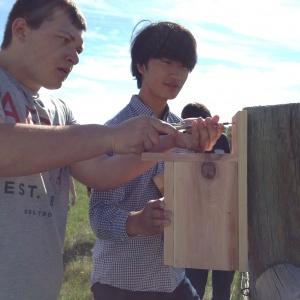 After 3,000 miles and a mid-trip flight back to Chicago for the CLM workshop, I am finally in Susanville, CA. Training in Chicago seems like a lifetime ago, but I feel lucky to have had the training before I got to my field office. It is hot, dry, and sunny every day here, but thankfully the nights are wonderfully cool. There are still a few patches of snow on top of the Diamond mountain ridge and people in the office are betting on when the last snow will disappear. Susanville is in a unique location at the edge of the Sierra Nevada’s (Lassen national forest) and the Great Basin. There are so many places to explore in the area, so it will definitely be a busy summer. I am really excited to hike and explore a bunch of the other small lakes, reservoirs, and some of the small western towns. My other co-interns have not arrived yet, so the past four days I have spent helping other seasonal BLM workers. On the first day I went out in the field with Julie, a seasonal worker whose project is focused on juniper surveys. Julie’s project is aimed at providing ground measurements of junipers to use to help verify how junipers appear in aerial photographs (junipers have their own spectral signature which can differentiate them from other plants). Junipers have greatly expanded their range in the past 100 years due to suppressed fire regimes, and can create dry conditions that are hard on endemic plants and sagebrush. Hopefully the juniper surveys will be helpful to use for estimating juniper cover using imagery. The views on the drive up out of town on 139 offered great views of the Diamond and Thompson mountains. We turned off of 139 and drove up Horse Lake road (536) towards Black Mountain and hiked to find two random plots. The random plots are 60 meters in diameter. Measurements of any juniper in the plot include height (measured with laser), canopy width (measured in 2 cross points), diameter at root base, as well as a location point. Being with Julie is pretty great because she has experience identifying plants from working in the Great Basin. I was scribbling down plant names and trying to repeat them in my head the whole time we were out.
After 3,000 miles and a mid-trip flight back to Chicago for the CLM workshop, I am finally in Susanville, CA. Training in Chicago seems like a lifetime ago, but I feel lucky to have had the training before I got to my field office. It is hot, dry, and sunny every day here, but thankfully the nights are wonderfully cool. There are still a few patches of snow on top of the Diamond mountain ridge and people in the office are betting on when the last snow will disappear. Susanville is in a unique location at the edge of the Sierra Nevada’s (Lassen national forest) and the Great Basin. There are so many places to explore in the area, so it will definitely be a busy summer. I am really excited to hike and explore a bunch of the other small lakes, reservoirs, and some of the small western towns. My other co-interns have not arrived yet, so the past four days I have spent helping other seasonal BLM workers. On the first day I went out in the field with Julie, a seasonal worker whose project is focused on juniper surveys. Julie’s project is aimed at providing ground measurements of junipers to use to help verify how junipers appear in aerial photographs (junipers have their own spectral signature which can differentiate them from other plants). Junipers have greatly expanded their range in the past 100 years due to suppressed fire regimes, and can create dry conditions that are hard on endemic plants and sagebrush. Hopefully the juniper surveys will be helpful to use for estimating juniper cover using imagery. The views on the drive up out of town on 139 offered great views of the Diamond and Thompson mountains. We turned off of 139 and drove up Horse Lake road (536) towards Black Mountain and hiked to find two random plots. The random plots are 60 meters in diameter. Measurements of any juniper in the plot include height (measured with laser), canopy width (measured in 2 cross points), diameter at root base, as well as a location point. Being with Julie is pretty great because she has experience identifying plants from working in the Great Basin. I was scribbling down plant names and trying to repeat them in my head the whole time we were out.
I also had the chance to go out with Jessie, a seasonal worker who is examining and documenting the status of BLM water rights. I knew I was going to write this blog, and on my second day when we finally got out of the office driving out on 139 after some Trimble issues, Jessie was glad to stop at the view point for me to snap a picture of the beautiful view I had seen driving out the previous day with Julie. Though she’s lived here for a while she said she had never taken the time to actually stop! We spent our time up on the east side of Eagle Lake, which is north of Susanville. Some of these stock ponds have not been visited or monitored since the 1960’s, but the drought conditions have brought attention back to their importance. It’s been quite the adventure to ride along these two track roads. I feel like we should be in a truck commercial. After locating the stock pond we measure the water, take a point, take photos, and document what the water is like and if we see any wildlife. We saw a gadwall duck with ducklings in one of the stock ponds, as well as a handful of mountain bluebirds and one crusty rancher guy. Jessie says there are 883 water right locations for the Eagle Lake Field Office, which add up to a lot of points to go out and find, especially since some of them are not that accurate. The second stock pond was over 150 meters from its location on the Trimble. With the field work for both Julie and Jessie’s projects, there is something really special about going out to find a random point and taking time to observe a specific area where many people will never go.
The field work has been fun, and I have already learned a lot of dos and don’ts. Hiking boots are an absolute necessity and ones that are all leather won’t fall victim to being attacked by pointy cheat grass seeds. Insulated water bottles are wonderful because everything heats up like crazy in the truck and nothing tastes better than cold tea or water. Never think about wearing shorts. For some reason, before I came out here I thought I might wear shorts on some days, but after being in the field for 1 minute I realized that is a very foolish thought. Driving out here also has its differences. First of all, there is a lot of dust. It would never have occurred to me to slow down while passing a ranch so as not to dust the house. The mosaic of private and public land gives you one more consideration to make before parking the truck before hiking to access some location, which is another consideration that would not have naturally occurred to me. After growing up in New England where entire roads are covered by deciduous trees, I have found shade on the roads and paths to be quite meager here. You sure can see for miles though! Experiencing the concept of the open range is also new to me. It remains somewhat puzzling to me when I see one cow out in the middle of nowhere. Driving up past Horse Lake was the first time I had seen a big dry lake. The shades of green, yellow and brown are quite beautiful in their own way. The colors look like more of a tray of mixed yellow, brown, and green water colors than the deep blues I am used to associating with the term ‘lake’ in the east. Water in the desert is pretty special. It is amazing to come down a dry, rocky ravine and find a creek with cattails and mud that you never could have imagined in the hot, dry desert.
To mark an end to my first week after days in the field with Julie, Jessie, and then Julie, I went out with Clif, the forester in the office. We drove up the ever more familiar Horse Lake road north of town, but this time we drove across the dried lake up on to the lower parts of Fredonyer mountain (around 7000 ft). The increase in junipers in the area is important to the work that Clif does, because larger junipers kill the sage brush underneath them and they can create big, hot fires that can become serious monsters. After growing up in the east, the thought of fires burning huge numbers of acres seems crazy, but a lot of things are just bigger out here. The Rush fire in 2012 was a massive fire that burned a significant amount along the ridges of the mountains east of 395. Clif explained that while fire regimes are natural here, fire cannot be used as a cheaper method to control the junipers at later growth stages because the fires will burn so hot that they will kill everything. Management options are limited to hand thinning, which reduces the disruption of the soil (this is important around sage grouse leks), and full on removal with skid roads, which chew up the dirt and create conditions for cheat grass to invade. Going up to Craemer spring and Fredonyer reservoir was quite magical because this was another one of the few places I have seen a gurgling stream and standing blue water. Leaving Fredonyer reservoir Clif started walking off at an angle from where we entered and I followed him. Situational awareness is pretty important out here in the big sky country. When we got back to the sage brush I said, “Where are we going?” He answered, “Where is the truck?” He was just testing my directional awareness, and I was able to point in the direction of the truck and guide us back. Clif thought we might see a rattle snake up along the old stone wall line we were walking to scout for a landing for the next juniper removal, but alas I have managed to get out of four days in the field without seeing a rattlesnake yet. I have seen several pronghorn, marmots, and cottontails. I am still looking forward to seeing a sage grouse at some point. Hopping out of the truck to open and close 6 barbed wire gates along our drive seems like a natural rhythm to break up the drive now. Clif gave me a quick tutorial on the radio and then we finished our tour driving out the end of Horse Lake road to 395 where we drove south back towards Susanville and passed another BLM fire station. We drove past a chipping plant in Wendel, where all of the small junipers are taken to be turned into wood chips. During a power outage in recent years, Clif said the wood chips from this plant were used to power Susanville for a few days! Unfortunately the plant is up for some sort of re-licensing, which will hopefully go through, otherwise there will be some issues with dealing with the medium sized juniper waste. Leaving it chopped to dry up in the field is not a viable option because this would mean more dense fuel on the ground, but the other facilities are 300 to 400 miles away. Driving back into town I got my first real view of Lassen, which honestly almost blended into the sky because of how much snow is on it still! The BLM also manages the land along the scenic Bizz Johnson trail, which runs near the Susan River, and Clif was kind enough to take me over to Pigeon Cliffs to get a great view. Meeting new people in the office who have ended up in Susanville too is really wonderful. I can see that one of the most valuable things from the internship will be experiencing a new place to the most of its entirety possible. As thankful as I am to see a new part of the country, it is also nice to hear that BLM employees like Clif think it’s refreshing to have new people from different parts of the country in the office too. I am looking forward to all of the people and plants that will be on my path through the next five months.
Hopefully we will be able to go out on some days and continue helping Julie, Jessie, and Clif with their projects. While my first four days have been a whirlwind, Susanville is growing on me and the office is feeling more familiar. I have a great feeling about what’s to come and I am gaining an appreciation for all of the beauty and surprises in the high desert. My brain is hurting a bit from all of the new plant names that I am starting to learn. My favorite grass so far is Briza maxima (rattlesnake grass). It even makes a little rattling sound in the wind. The nuances between different sagebrush are becoming clearer, and I am able to identify some of the flowering forbs. It is really fun to see so many new and different plants, as well as completely new scenery. This first week is flying by and I’m excited for my team of SOS interns to get started here soon. On Thursdays there is goaltimate frisbee up at the field on the track at Lassen College. The scenery is quite something from this spot; the views of the Diamond mountains and Thompson Peak are pretty nice. I met two former CLM interns who are still working in a related field in the area, one of whom was hired by the BLM. After a bunch of sweat, sage smells, dirt, dust, views, cheat grass, sunscreen, meter tape reeling, barbed wire gates, and Trimble time, I feel well primed to jump forward to what lies ahead.
Alia
BLM Eagle Lake Field Office
Susanville, CA

The northeast corner of Eagle Lake from a BLM road while checking stock ponds.



